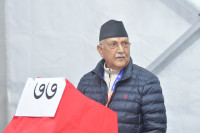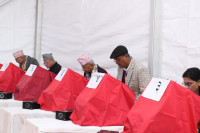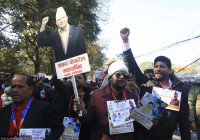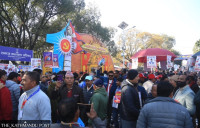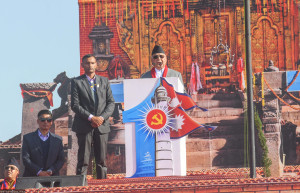Politics
Politicians, individuals compete to form new parties as elections near
Ten political parties were registered with the Election Commission in past three months and more are coming.
Binod Ghimire
Kamal Thapa, former chairperson of Rastriya Prajatantra Party, on Tuesday announced that he had quit the party.
Ever since he was defeated by Rajendra Lingden in the party’s general convention in December, Thapa had been looking for ways to leave the party and form a new one. He is approaching leaders from the royalist party to join his new force. If the claims of leaders close to Thapa are anything to go by, a new party led by him will be announced shortly.
Thapa, however, isn’t alone in the competition to form new parties. As 2022 is going to be an election year, not only the leaders from different political parties but former government officials are also launching new parties. Some of them have already registered their parties in the Election Commission while some are preparing to register targeting the local elections scheduled for May 13.
Hridayesh Tripathi, a prominent face of Madhes politics, quit the then Rastriya Janata Party and joined hands with the CPN-UML. He won the elections on CPN-UML ticket although he claims himself to be an independent lawmaker. On December 14, he announced a new party—Janata Pragatishil Party—and is busy holding meetings to unite his supporters.
With the announcement of the date for local elections, Tripathi is preparing to register his party in the Election Commission within a few days. “We are all set to register our party within a couple of days,” Tripathi told the Post. “We will contest the local elections.”
Former Deputy Inspector General of Nepal Police Ramesh Kharel on January 5 registered a party named Nepal Sushasan Party. He has already started a campaign to preserve public land in an attempt to gain public support for his party.
Similarly, Bamdev Gautam, a member of the National Assembly and former vice-chairperson of the CPN-UML, too is holding consultations to launch a new party. He is reportedly planning to announce his party by the end of February.
Election Commission records show as many as 103 parties are registered with the commission. Of them 10 were registered in the past three months after discourse on elections started. Tarai Madhesh Loktantrik Party (TMLP) is one of them. Brikesh Chandra Lal, a leader of the Loktantrik Samajbadi Party, revived the TMLP, which had no existence after it was merged to form the Rastriya Janata Party in 2017.
“We have revived the TMLP as there is currently no party advocating the Madhes agenda in existence. All the so-called Madhesi parties just treated Madhesi people as their vote banks,” Lal told the Post. “We will work to give equal status to the Madhesi people who have been treated as second class citizens for decades. Our party will contest the local elections.”
Parties fighting elections must be registered with the commission and they have to re-register for each election. Shaligram Sharma Poudel, spokesperson at the commission, said only the parties that have been registered with the commission are invited to register for the May 13 polls.
“The parties still have time to get registered as there are still a few weeks for the commission to make a call for registration for the election purpose,” he told the Post. “We are still working on a timetable.” Officials at the Election Commission say there is a trend that the numbers of parties are higher during the elections period although many of them fail to renew themselves.
Political analysts say the upcoming elections are a major factor for the ongoing competition in announcing new parties. Meena Vaidya Malla, a former professor of political science at the Tribhuvan University, says those who have announced new parties might have an expectation that they can rise to power from the local elections followed by provincial and federal elections. “However, launching a new party right ahead of the elections is unlikely to give them desired results,” she told the Post. “I believe the voters are smart these days. It will be difficult for the election-focused parties to fare well.”
Though dozens of parties contested the 2017 local elections, only 15 could win at least one representative at the local level. Among them, five parties—CPN-UML, Nepali Congress, CPN (Maoist Centre), Sanghiya Samajbadi Forum Nepal and Rastriya Janata Party—won over 95 percent of the total 35,041 positions in the 753 local units.
Coming to power through the votes of the general public is the main objective of any party, according to experts. Tula Narayan Shah, a political commentator, says among the new parties announced or being formed of late, he sees Tripathi’s party creating space for itself mainly in Lumbini. He says as the Janata Samajbadi Party and the Loktantrik Samajbadi Party are more focused on the Madhes Province, there is a scope for a Madhesi party in Lumbini province. “Among the new parties contesting the upcoming election I see a room for Tripathi’s party to grow while Janamat Party led by Chandra Kanta (CK) Raut and Bahujan Ekata Party, which advocates for Dalit rights too are going to make their presence felt,” he told the Post. “I don’t see other new parties getting public acceptance.”




 20.12°C Kathmandu
20.12°C Kathmandu
